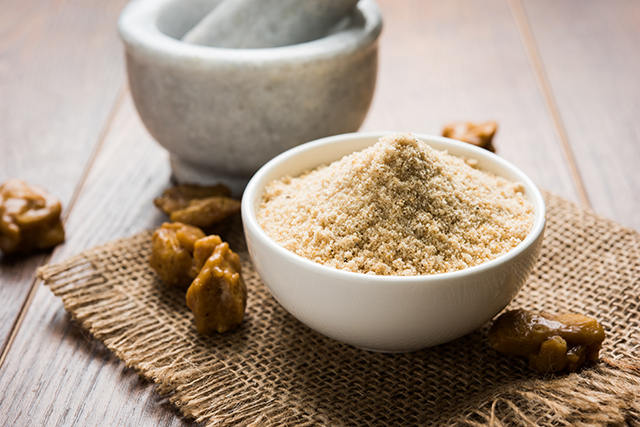by Winnie Martin
5.8.21 – Asafoetida (Ferula assa-foetida) may be more familiar to you through unsavory names such as devil’s dung and stinking gum. It merited these names because of the fetid, pungent odor it emits. But despite this reputation, F. assa-foetida sees wide use in India for both medicinal and culinary purposes.
Asafoetida is used in Ayurvedic medicine to treat stomach illnesses, headaches, asthma and menstrual pain. Ayurvedic medicine also acknowledged asafoetida’s anti-inflammatory, antiviral and antibacterial properties that make it a perfect healing herb.
But did you know that this strong-smelling herb also boasts of potent anti-cancer effects? A 2017 study by a group of Iranian scientists looked at how F. assa-foetida affected breast cancer cells in mice. One group of mice received an asafoetida treatment while the other did not. Here are three reasons they found in the study that make asafoetida an effective herb against the big C.
Asafoetida shrank tumors in affected mice
The scientists found that asafoetida shrank tumor size in the treated mice by more than 60 percent. The treated mice also saw their tumor weight dwindle by almost half. Mice who received asafoetida also started gaining weight, which suggested that the strong-smelling herb helped undo metabolic damage caused by cancer.
Asafoetida caused cancer cells in the mice to die out
The scientists also noticed that a large amount of cancer cells in mice treated with the herb died out. Despite the presence of tumors in some areas, they had sections where the cells were already killed off. This suggested that asafoetida played an active role in speeding up the death of cancer cells.
Asafoetida stopped cancer cells from spreading throughout the body
Finally, the researchers looked at other organs in the asafoetida-treated mice. They detected fewer living cancer cells in the lungs of these mice, while they detected dead cancer cells in their livers. Based on this, the researchers noted that asafoetida prevented cancer cells from spreading to other parts of the body and causing further harm.
Cooking with asafoetida
Asafoetida is used as a culinary spice in India, where the country’s different languages have different names for it. Despite the different monikers for asafoetida, many people agree that just a small amount of it is enough to brighten up a myriad of Indian dishes. Indian cooks would usually add in asafoetida alongside other spices when they fry these in oil or ghee (clarified butter). The offensive smell of asafoetida then mellows down to a scent similar to onions or leeks.
Because of this quality, asafoetida is used to enhance the savory taste of curry dishes. You can add it to curries made of lentil, chickpea and other vegetables. If you are cooking mutton curry, a few pinches of asafoetida will help bring out its taste. Asafoetida also imparts an onion-like flavor to certain dishes, making it suitable for followers of certain religions who are not allowed to consume strong-smelling foods.
Pure asafoetida is sold as resin chunks, processed from the dried sap extracted from F. assa-foetida stems and roots. The dark amber asafoetida resin is difficult to grate, so it is traditionally crushed between stones or with a hammer. If you opt to use asafoetida resin chunks for your dishes, you should scrape off small quantities as the strong smell can be overwhelming.
Also, you should put asafoetida in an airtight container and keep it away from other spices. The smell of pure asafoetida is strong that it can contaminate other spices nearby.
Alternatively, you can choose compound asafoetida to use in your food – which is easier to use when cooking. It usually consists of 30 percent pure asafoetida resin combined with rice or wheat flour and gum arabic. These additional ingredients temper the strong odor of asafoetida and make it easier to store.
Don’t let the strong odor of asafoetida intimidate you, as this herb is a very strong ally against cancer!



